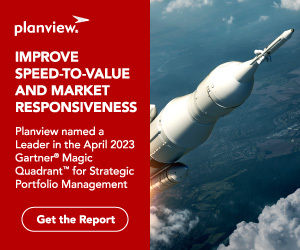It’s a familiar refrain from the project and portfolio managers we talk to: “These portfolio views are amazing, but there is no way we have the data to use Enrich Analytics.” We LOVE hearing this, because we can respond with good news: You probably have enough information to leverage our tools and gain big insights into your portfolio’s alignment with strategy, and you might even have enough to prioritize your initiatives. In fact, you can get some value from Enrich’s powerful cloud-based platforms no matter what data you have. This post is the first in a series that summarizes the data you need for basic, intermediate, and advanced portfolio management. The figure below captures the key data sets as you build maturity in using Enrich’s platform and in developing your portfolio analysis process.
Data needed at each level of portfolio management. The only requirements to get started are the three items in the orange Beginner box. How much further you go depends on your people, your portfolio, and your goals.
Everything in the orange Beginner box is essential. You can’t get your portfolio initiative off the ground without those pieces, so start there. Within the Intermediate and Advanced sections, you can pick and choose what suits your needs; the left-most options are the easiest to collect—those on the right are progressively more difficult (but also likely to pay deeper dividends). The Advanced section is divided into two groups, capturing two different kinds of value-based criteria: scores and market/financial metrics. I’ve separated them because some companies are metric-averse, preferring a scoring model, and others rely almost exclusively on metrics. The right answer for a given portfolio depends on the company’s culture, portfolio content, and strategic objectives.
We developed this series of posts as an alternative to the other “how-to-PPM” guides available on the interwebs today, which tend to suggest that all or nothing is the only way. Our goal is to make portfolio management more accessible to more companies by demystifying it—and showing just how little information is really needed to get substantial value from a simple portfolio process. This series focuses on the data required at each step because so much of the resistance we’ve seen to portfolio management involves data acquisition. We hear, over and over again, “Nobody has time to provide it and nobody believes what we’ve compiled.” We think our stepwise approach, by making the process manageable, can help a lot of companies get started.
If you don’t take anything else from this series, remember these key facts:
- You’ll get value at each level.
- Build gradually. Start with the essential data at the beginner level, then move through the data sets from left to right (in the figure above) at the intermediate and advanced levels to build value progressively.
We hope you enjoy the series and look forward to your comments!
Getting Started: Beginner Portfolio Management
It’s Going to Cost You: Intermediate Portfolio Management





